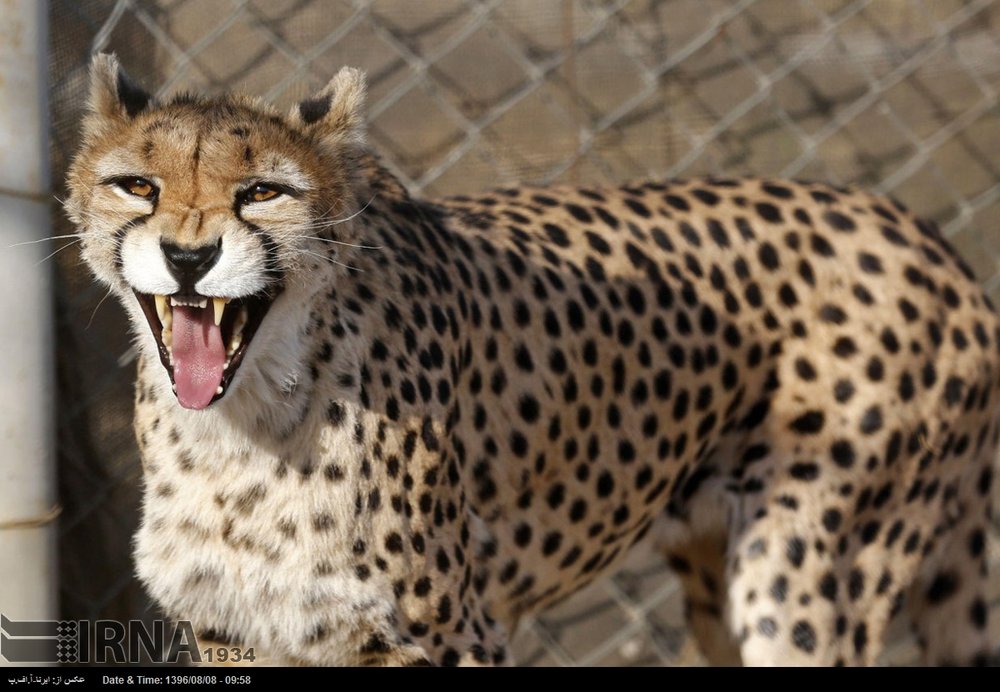More than 5,500 livestock moved out of Asiatic cheetah’s home range in Iran

TEHRAN — Following the “cheetah forever” campaign contributions some 5,536 livestock have been moved out of cheetah home ranges in Touran National Park in the central province of Semnan, campaign spokesman Hamidreza Mirzadeh has said.
The ‘cheetah forever’ campaign was launched by Iranian Actress Hedieh Tehrani on August 31, 2018, the date marking the National Asiatic Cheetah Day. It is intended to collect contributions to help Asiatic Cheetah conservation project.
The overlapping home ranges in Touran National Park have caused some livestock-cheetah conflict. The campaign is soliciting contributions from the public to help purchase some 12 home ranges in 100,000 hectares of Touran National Park to minimize the conflicts between the livestock and the wild animals.
The Asiatic cheetah mainly inhabits the desert areas around Dasht-e Kavir in the eastern half of Iran, including parts of provinces of Kerman, Khorasan, Semnan, Yazd, Tehran, and Markazi. Most live in five protected areas: Kavir National Park, Touran National Park, Bafq Protected Area, Dar-e Anjir Wildlife Refuge, and Naybandan Wildlife Reserve.

The cheetah has been listed as critically endangered on the IUCN Red List since 1996.
The number of remaining Asiatic cheetahs can be estimated at almost 50. However, due to the shortcomings of trap cameras installed in the protected areas and other techniques of counting cheetahs it is not easy to tell the gender composition.
The cheetah-livestock interactions and the presence of human beings and guard dogs in cheetah’s habitats, road accidents, reduced prey base, and habitat fragmentation due to human encroachment are of the threats making the cheetah’s future uncertain.
The ‘cheetah forever’ campaign is mainly concerned with moving livestock out of cheetah habitats in Touran National Park. When a predator’s habitat, in this case Asiatic cheetah, is also used for livestock grazing, it raises two main concerns. One issue is livestock predation and the retaliatory persecution it can potentially lead to.
The other main concern is what growing numbers of livestock will mean for wild ungulate population. A landscape offers limited resources, and the cheetah’s wild prey species are competing for these resources with domestic livestock. If there is too much livestock grazing, wild ungulate populations may eventually disappear. The cats would then be deprived of their preferred food source.

“Out of 12 livestock home ranges with 7,487 livestock some 5,536 are moved out of the cheetah habitats,” Mirzadeh said.
He said in some cases the person who had legally owned the land has died and doing the legal formalities might take some time and also there are some people who have preferred to receive another range land to gaze their livestock in exchange for their current lands, which is not easy to obtain considering the lack of vegetation in many range lands.
Mirzadeh went on to say that so far the campaign has succeeded in soliciting some 6.2 billion rials (nearly $148,000) and experts have started negotiations with the livestock owners since late October, 2017.
He further underlined the fact that the campaign is public-spearheaded and that the Department of Environment or other responsible bodies are merely collaborating to ease the process.
The campaign spokesman also said in order to ensure that the money is used for cheetahs’ conservation projects, the Inspection Organization is following up on the expenditures.
Negotiations will continue to move all livestock out of the cheetahs home ranges, Mirzadeh concluded.
MQ/PA
Leave a Comment